As a professional civil engineer with over 25 years of experience in the Look Paver Sealer industry, I can confidently say that the primary purpose of using a wet-look paver sealer is to enhance the appearance and protection of paved surfaces. The wet-look finish created by these sealers helps to bring out the natural colors and textures of pavers, making them look vibrant, glossy, and well-maintained.
Beyond the aesthetic benefits, wet-look paver sealers also provide a protective barrier that helps to prevent staining, fading, and deterioration of the pavers caused by exposure to the elements, foot traffic, and other environmental factors. This extends the lifespan of the paved surfaces and keeps them looking their best for years to come.
In my experience, investing in a high-quality wet-look paver sealer is a cost-effective way for property owners and managers to elevate the curb appeal and long-term value of their commercial or residential properties.
The Problem – Drab, Weathered Pavers
Over months and years of punishing sun, sweeping rains, and heavy use, outdoor pavers seem to lose their spirit. What was once a vibrant russet patio now appears washed-out and anemic. Those stately cobblestone walkways now blend into the landscape instead of providing a welcoming pop of texture.
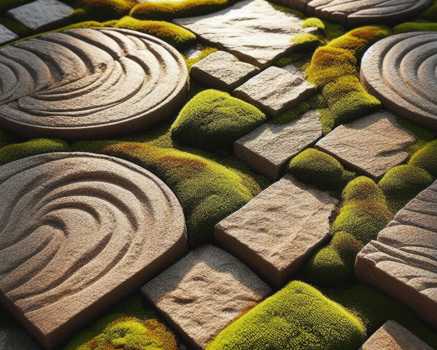
It’s a shame how something intended to be an eye-catching architectural focal point can fade into obscurity and neglect. The relentless effects of weather and oxidation leach away the rich hues, leaving behind a mere hint of the original grandeur. Those pavers you picked to provide a striking first impression now do the opposite, signaling neglect and decline. Instead of enhancing, they date the property. Rather than tying together the landscape, they recede from view. Faded, weathered pavers defeat the very purpose of their existence – to provide beautiful, durable, livable enhancements.
But the story doesn’t have to end in defeat. With the right protective sealer, those drab dull pavers can be revitalized into the stunning showpieces they once were. Fight the signs of aging and neglect and give your outdoor living spaces the fresh pop of appeal they deserve!
Why Are Outdoor Pavers Fading Color Over Time?
Sun exposure and oxidation fade hues
Once-vibrant reds and tans turn dull
Why Outdoor Pavers Loss of Vibrancy?
Weathering leaves pavers looking worn
Defeats the aesthetic goal of eye-catching spaces
Dingy faded pavers make spaces look dated and neglected rather than welcoming outdoor extensions of the home.
The Solution – Wet Look Paver Sealers
| Look | Product Used | Solids Content | Additional Information |
|---|---|---|---|
| High Gloss | Acrylic (most) | > 30% | |
| Gloss | Acrylic (most) | Around 25% | Some resist yellowing |
| Satin Sheen | Acrylic (most) | 10-15% | |
| High Gloss | Acrylic with Polyurethane | Varies | Added polyurethane for gloss |
| Gloss | Acrylic with Polyurethane | Varies | Added polyurethane for gloss |
| Satin Sheen | Acrylic with Polyurethane | Varies | Added polyurethane for gloss |
| Gloss | Solvent-Based Options | Varies | Higher VOCs |
| Satin Sheen | Solvent-Based Options | Varies | Higher VOCs |
Wet Look Paver Sealers Types:
Gloss and Sheen Levels
- High gloss > 30% solids content
- Gloss around 25% solids
- Satin sheen 10-15% solids
- Determine the look based on the product used
Wet Look Sealer For Stone

Acrylic and Polyurethane Formulas
- Most are acrylic emulsions
- 100% acrylic resists yellowing
- Some contain polyurethane for added gloss
- Solvent-based options have higher VOCs
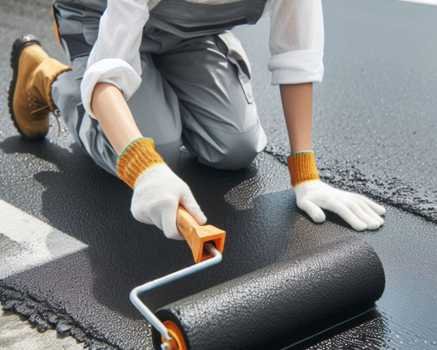
Benefits of a Wet Look Finish
Applying a wet-look sealer provides several advantages:
Darkens and Enhances Color
-
Richer, darker coloration pops from gloss
- The coating deepens hues and tones for serious visual impact.
- Natural reds transform into bold burgundies; tans become rich umbers.
- It’s as if an Instagram filter is applied to dramatically saturate the color.
-
Vibrancy restored to faded pavers
- Oxidation and weathering fade pavers over time, turning them pale.
- The wet-look finish restores the saturated intensity the pavers once had.
- Years of UV damage and wear are erased to bring back bold, lively hues.
-
Decorative or stained concrete enhanced
- On patterned, stained concrete, the gloss enhances the contrast.
- Intricate designs seem to jump out with the slick sheen.
- Brings out the best in decorative finishes like acid stains, dyes, or engraving.
Provides Pop and Curb Appeal
Wet-look sealers give pavers a serious wow factor visible from the street. It’s like they instantly have a vibrancy filter switched on. The eye-catching glossy finish grabs your attention even from far away.
It’s human nature to be drawn to shiny objects. Wet-look pavers are no exception. The light bouncing off the slick surface gives a wonderful glimmer that pulls your gaze in. Subtle richness becomes over-the-top elegance.
If you have decorative patterns or special designs like compass roses etched into concrete, a wet-look sealer makes them pop like never before. Intricate flagstone shapes and brick designs stand out when given the wet treatment. It takes the artwork of the mason to another level.
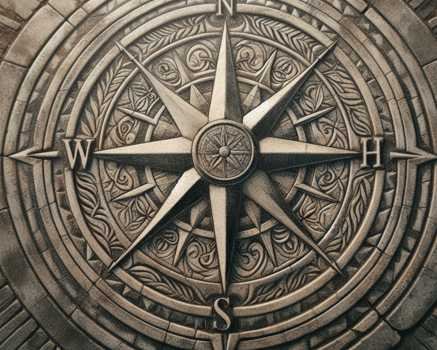
Entertainment areas meant for relaxing with friends are the perfect canvas for wet-look sealers to work their magic. The dazzling sheen transforms simple spaces into conversation pieces. The liquid mirror finish gives off an aura of luxury that sets the mood for fun.
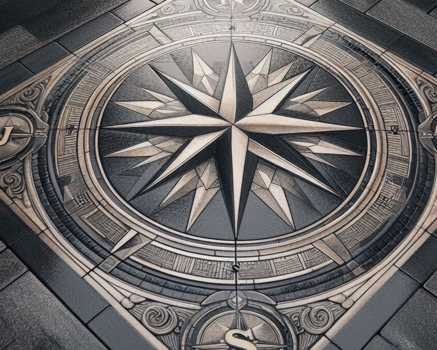
Any area visible from the street is prime real estate for wet-look sealers to showcase their curb appeal power. There’s no better way to give boring pavers new life than a glossy makeover.
Indicates Newly Sealed Surface
- Wet sheen signals recent maintenance
- Gloss shows pavement has protected coating
- Provides visible sign of investment
Achieve a uniform, consistent wet-look finish across my paved surfaces.
As an experienced civil engineer, I understand the importance of achieving a uniform, consistent wet-look finish when sealing paved surfaces. This not only enhances the overall aesthetic appeal but also ensures the protective benefits of the sealer are evenly distributed.
One of the key factors in achieving a consistent wet look is proper surface preparation. By thoroughly cleaning and prepping the pavers before application, you minimize the risk of inconsistencies in the sealer’s adhesion and penetration.
Another crucial element is careful application techniques. I **always recommend using a high-quality, low-pressure sprayer to apply the sealer in thin, even coats. This helps to ensure uniform coverage and prevents pooling or streaking.
It’s also important to pay close attention to the coverage rates and application patterns when sealing the pavers. Overlapping the spray patterns and maintaining consistent coverage across the entire surface can **help to eliminate any visible lines or “edges”.
Additionally, the number of coats applied can impact the overall consistency of the wet-look finish. In my experience, two to three thin, even coats typically provide the best results, as it **helps to create a seamless, uniform appearance.
Where Wet Look Sealers Work Best
Certain settings are ideal for maximizing the visual appeal of wet-look sealers:
Patios and Pool Areas
- Highlight decorative patterns on concrete patios
- Enhance stonework surrounds on pools
- Draw the eye in leisure entertainment spaces
Retaining Walls and Landscaping
- Showcase intricate brick or stone walls
- Complement gardens, water features
- Contrast against plants and materials
Commercial Settings Benefits
- Enhance business entryways
- Showcase company logos/signage on floors
- Draw attention to walkways on properties
Wet-look sealers help spaces make a bold visual statement. The striking gloss finish is at home in areas meant to impress or exhibit quality.
The Evolution of Asphalt Mix Design and Pavement Construction
Commercial Settings
- Highlight outdoor dining patio areas at restaurants
- Make hotel pool decks and courtyards stand out
- Enhance logos at corporate campus entrances
- Draw attention to historic buildings in tourist areas
Considerations for Sealers and Surfaces
Applying wet-look sealers requires evaluating products and surfaces.
Gloss Level and Traction
- The high gloss creates a slick surface when wet
- Satin or semi-gloss options add a subtle sheen with more traction
- Etching or coatings can improve grip on high gloss
- Ramps, slopes, and high-traffic areas need caution
Can Asphalt Driveway Be Resurfaced A Road Construction Manager Guide
Wet Look Matte Finish Paver Sealers
Unlike high-gloss sealers, matte options provide a more subtle sheen while still offering protection. In this guide, we’ll explore the world of matte-finish paver sealers and understand why they are the preferred choice for many outdoor spaces.
What is a Matte Wet Look Paver Sealer?
Lower Gloss Acrylic Formulas
Matte wet-look paver sealers are formulated with lower gloss acrylics. This means they contain fewer additives that create a high shine. As a result, the finish is more subtle, providing a wet look without excessive gloss.
Minimal Reflectivity Preserves Texture
One of the key features of matte sealers is their minimal reflectivity. Unlike high-gloss alternatives, matte finishes allow the paver’s natural texture to shine through. This makes them an excellent choice for those who want to showcase the character of their pavers.
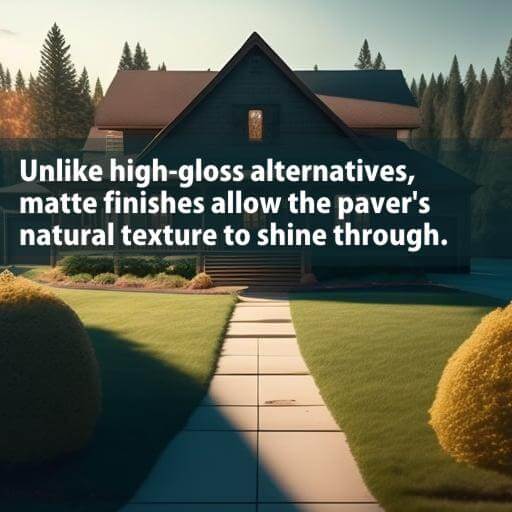
Benefits of Matte Over High Gloss
Maintains a More Natural Appearance
One of the primary advantages of matte wet-look paver sealers is their ability to maintain a more natural appearance. They enhance the paver’s color without altering it significantly, making them ideal for projects where you want to preserve the original look.
Provides Traction When Wet
Another benefit of matte sealers is their ability to provide traction, even when the surface is wet. This is especially important for areas prone to moisture, like pool surrounds or walkways, where safety is a top concern.
Easier Application and Touch-Ups
Matte sealers are known for their ease of application. They are forgiving when it comes to applying multiple coats, and touch-ups are often seamless. This makes them suitable for DIY projects.
Where Matte Wet Look Works Best
High Traffic Areas
Matte finish sealers are an excellent choice for high-traffic areas. They can withstand the wear and tear of constant use while providing a protective barrier.
Pool Surrounds and Decks
For pool surrounds and decks, matte wet-look sealers are a top pick. They offer the desired wet look without making the surface slippery, ensuring safety without sacrificing aesthetics.
Steep Driveways or Walkways
Steep driveways and walkways can benefit from matte sealers that offer traction and a subtle sheen. This helps prevent accidents and maintains the paver’s visual appeal.
How to Apply Matte Finish Sealers
Proper Dilution and Coats
When applying matte finish sealers, proper dilution and multiple coats are essential. Follow the manufacturer’s instructions for the best results.
Achieving a Uniform Appearance
To achieve a uniform appearance, it’s crucial to apply the sealer evenly. Using a roller or sprayer can help ensure an even coat.
Considerations for Sealers and Surfaces
Choosing the right paver sealer requires evaluating both the product and substrate surface.
Gloss Level and Traction
- Higher gloss sealers like wet-look acrylics become slippery when wet, requiring caution on slopes or high-traffic areas.
- Penetrating and matte sealers maintain more natural traction. Etching or grip coat additives can improve slick acrylics.
- Consider the location and usage before opting for mirror-like liquid gloss levels. Satin or semi-gloss may suffice for a moderate sheen with traction.
Porosity and Absorption
- Testing surface absorbency indicates how much sealer will soak in and ensures proper coverage rates.
- More porous concrete, brick, and natural stone require sealers formulated for penetration into the substrate, not just a surface film.
- Less porous materials like dense aggregates may only need thin surface-blocking sealers. Match sealer to porosity.
Prior Treatments and Conditions
- Previously sealed surfaces may resist adhesion or require stripping prior to recoating.
- Concrete sealers may not work well on clay pavers. Incompatible sealers cause issues.
- Damaged, cracked, stained, or deteriorated substrates need repairs and intensive cleaning beforehand for sealer effectiveness.
Knowing the exact substrate condition and properties ensures selecting compatible, penetrating sealers for optimal bonding and performance.
How to apply Wet Look Paver sealer
Achieving eye-catching wet-look results requires careful prep and sealing techniques. Follow these application tips for maximum visual impact.
Important Step: Comprehensive Cleaning and Surface Preparation
Before enhancing dull, faded pavers, restore the surface. Pressure washing removes grime from deep within pores while patching repairs any damaged areas. Let the substrate dry completely before priming for sealer adhesion. Proper prep maximizes bonding and final sheen.
Key Tips for Flawless Sealer Application
Use a consistent overlapping application pattern to prevent streaks and unevenness. Pour sealer into a roller pan reservoir to prevent contaminating the bulk supply. Allow the first coat to fully cure before adding the vital second coat to build protection and gloss levels. Resist the urge to rush this process for durable results.
Curing and Drying Time Factors
Curing allows the acrylic or urethane sealer to crosslink and harden completely within the pavers. This may take 2-3 days after the surface initially dries. Avoid foot traffic or replacing furniture during this critical time. Let the sealer cure fully to achieve the desired wet look and longevity.
With patience and care taken during cleaning, sealing, and curing, wet-look pavers make an impressive statement that locks in curb appeal.
Preserving That Just-Sealed Sheen Long-Term
Achieving stunning wet-look results is just the first step. Proper maintenance keeps pavers looking freshly glossy for years. With routine care and strategic reapplication, vibrant dark colors and liquid mirror shine can withstand the test of time.
Diligent Cleaning is Key
Regular sweeping or blowing keeps sealed surfaces free of abrasive dirt and debris that can wear down the acrylic film prematurely. For deeper cleaning, pressure washing with the nozzle held at least 8 inches away dislodges grime from the protective crevices of the textured surface without damaging the coating.
Household cleaners should be avoided, as they can react with and break down the sealer polymers. Mild pH-neutral detergents formulated for coated surfaces are ideal for occasional deep cleaning when needed. Be sure to thoroughly rinse any cleaning agents off the surface.
Strategic Reapplication Maintains the Magic
While quality wet-look sealers last 2-3 years or more, reapplication is eventually needed. As the water beading effect starts to wane, it signals the protective acrylic or urethane layers are thinning and due for renewal. Reapply before the finish appears too faded or worn. Strategic resealing maintains rich, saturated colors and keeps the wet sheen going strong.
For best results, strip the existing sealer before recoating if heavy buildup is present. This allows the new sealer to properly bond and penetrate. Follow the manufacturer’s guidelines on compatible stripping products and procedures. Proper prep work and methodical sealing technique ensure the refreshed wet look dazzles like the original.
The Reward for Ongoing Care is Lasting Curb Appeal
Keeping wet-look pavers in like-new condition requires some occasional upkeep – but the visual rewards are worth it. With the right maintenance strategy and care, the stunning enhancements and protection of quality sealers can impress for years on end. A little effort goes a long way when preserving your property’s upgraded aesthetic.
Applying a wet-look sealer provides several advantages:
| Aspect | Wet Look Sealer | Matte Finish Sealer |
|---|---|---|
| Darkens and Enhances Color | Yes | Yes |
| Preserves Natural Texture | Slight Alteration | Minimal Alteration |
| Traction When Wet | Potential Slippery | Provides Traction |
| Visual Appeal | High Gloss Shine | Subtle Sheen |
Table 1: Gloss Level and Traction
| Gloss Level | Traction |
|---|---|
| Higher Gloss | Slippery when wet, caution on slopes |
| Penetrating | Maintains natural traction |
| Satin/Semi-gloss | Moderate sheen with traction |
Table 2: Porosity and Absorption
| Surface Absorbency | Sealer Type |
|---|---|
| High Absorbency (Porous) | Penetrating sealers, not just surface film |
| Low Absorbency (Less porous) | Thin surface-blocking sealers |
Table 3: Prior Treatments and Conditions
| Surface Condition | Recommended Actions |
|---|---|
| Previously Sealed | May resist adhesion or require stripping |
| Incompatible Surfaces | Concrete sealers may not work well on clay pavers, causing issues |
| Damaged, Cracked, Stained, or Deteriorated | Need repairs and intensive cleaning beforehand for sealer effectiveness |
Frequently Asked Questions
What is the purpose of using a wet look paver sealer?
The primary purpose is to enhance the appearance and protection of paved surfaces by creating a vibrant, glossy wet look finish that brings out the natural colors and textures of the pavers.
What are the key factors to consider when choosing a wet look paver sealer?
Key factors include durability, application and curing time, slip resistance, environmental impact, and cost-effectiveness.
How do I properly prepare the paver surface before applying a wet look sealer?
Thorough cleaning, allowing the pavers to fully dry, and addressing any cracks or damage are crucial for proper surface preparation.
What are the key steps involved in properly applying a wet look paver sealer?
Following the manufacturer’s instructions, using a high-quality, low-pressure sprayer, and applying thin, even coats are best practices.
How do I maintain a wet look paver sealer to ensure it lasts as long as possible?
Regular cleaning, periodic inspections, and timely reapplication every 2-5 years are key for maintaining the wet look finish.
How can I achieve the deepest, most vibrant wet look finish with a paver sealer?
Using a high-solids, solvent-based sealer, proper surface preparation, and applying 2-3 thin coats can maximize the depth and vibrancy of the wet look.
How can I ensure a slip-resistant finish when applying a wet look paver sealer?
Incorporating an anti-skid additive and applying the sealer in thin, even coats can help maintain adequate slip resistance.
How do I address the discoloration or fading of a wet look paver sealer?
Identifying and addressing the root cause, cleaning the surface, and potentially reapplying the sealer can help restore the wet look finish.
How can I achieve a uniform, consistent wet look finish across my paved surfaces?
Thorough surface preparation, careful application techniques, and following the recommended curing times are key for a consistent wet look.
How can I repair or touch up a wet look paver sealer?
Cleaning the affected area, filling any cracks or chips, and applying a compatible touch-up sealer can help maintain the overall wet look.
How can I achieve the best wet look results when sealing porous paver surfaces?
Using a solvent-based, high-solids sealer and applying 2-3 thin, overlapping coats can optimize sealer penetration and the wet look finish.
What are the benefits of using a wet look paver sealer?
Wet look sealers enhance the appearance, protect against weathering and wear, and extend the lifespan of paved surfaces.
How do I choose the right wet look paver sealer for my project?
Consider factors like durability, application ease, slip resistance, environmental impact, and cost-effectiveness to select the optimal sealer.
What are the most common types of wet look paver sealers?
Acrylic-based, solvent-based, thermoplastic, and preformed thermoplastic tapes are the most common wet look sealer options.
How does project size affect the cost of wet look paver sealing?
Larger projects generally have a lower per-linear-foot cost due to economies of scale.
What are the pros and cons of using a solvent-based vs. acrylic-based wet look sealer?
Solvent-based sealers offer better durability but can have stronger odors, while acrylic is more affordable but may require more frequent reapplication.
How can I ensure a wet look paver sealer is applied safely and in compliance with regulations?
Choosing low-VOC, eco-friendly formulas and following manufacturer guidelines are key for safe and compliant application.
How do I prepare a previously sealed paver surface for reapplication of a wet look sealer?
Thorough cleaning and removing any existing sealer residue are essential for proper surface preparation.
What are the most common causes of premature failure or deterioration of a wet look paver sealer?
Improper surface preparation, heavy foot traffic, UV exposure, and lack of maintenance are common culprits.
How can I achieve a more slip-resistant finish when using a wet look paver sealer?
Incorporating an anti-skid additive and applying the sealer in thin coats can help maintain adequate traction.
How often should I reapply a wet look paver sealer to maintain the desired finish?
Resealing is typically recommended every 2-5 years, depending on the level of foot traffic and exposure.
What are the environmental considerations when using a wet look paver sealer?
Choosing low-VOC, eco-friendly formulas that comply with local regulations is important.
How can I save money on a wet look paver sealing project?
Larger projects generally have a lower per-linear-foot cost, and proper surface preparation can extend the sealer’s lifespan.
What are the safety risks associated with applying a wet look paver sealer?
Slip and fall hazards during application and curing are the primary safety concerns that must be addressed.
How do I choose the right equipment for applying a wet look paver sealer?
Using a high-quality, low-pressure sprayer is recommended for even, consistent coverage.
What are the long-term maintenance requirements for a wet look paver sealer?
Regular cleaning, inspections, and timely reapplication are crucial for maintaining the wet look finish.
How can I achieve a more uniform, seamless wet look across my paved surfaces?
Careful surface preparation, consistent application techniques, and following curing guidelines are key.
What are the most common mistakes to avoid when applying a wet look paver sealer?
Rushing the application, using incompatible products, and failing to properly prepare the surface are common pitfalls.
How can I repair localized damage or fading in a wet look paver sealer?
Thorough cleaning, filling any cracks or chips, and applying a compatible touch-up sealer can help restore the finish.
As an experienced civil engineer, what are your top tips for a successful wet-look paver sealing project?
Emphasize proper surface preparation, use high-quality materials, follow best application practices, and maintain the sealer over time.
What is the best way to clean wet-look sealed pavers?
Gently sweeping or blowing keeps surfaces free of abrasive dirt and debris. For deeper cleaning, use a pH-balanced cleaner safe for acrylics along with a pressure washer on the fan setting from 6-8 inches away. Avoid household cleaners which can damage the acrylic film.
How often should wet-look paver sealers be reapplied?
Typical durability is 2-3 years, but monitor performance and reapply sooner if water beading diminishes or the finish appears worn. Heavy-use areas may need resealing annually. For best results, strip existing buildup before recoating.
Can you change wet-look sealer types when reapplying?
It’s generally best to use the same sealer type as originally applied. If switching products, confirm compatibility and do test sections first. Acrylics and urethanes can be incompatible. Completely remove previously incompatible sealers if issues arise.
What are the best matte wet-look water-based pave stone sealers?
- Surebond SB-6000 Matte Sealer
- MasonryDefender Wet Look Patio Paver Sealer
- Foundation Armor AR350 Wet Look Sealer
- Black Diamond Stoneworks Wet Look Natural Stone Sealer
- Seal ‘n Lock SuperWet Water-Based Paver Sealer
- Eco Advance EACON16CON Water-Based Concrete Sealer
- Aqua-X 11 Clear, Penetrating Concrete Sealer
- Rust-Oleum Wet Look Concrete Sealer
- KILZ L390201 Interior/Exterior Concrete, Brick, and Tile Liquid Masonry Sealer
- LastiSeal Concrete Stain and Sealer
These sealers offer a matte finish while providing a wet look for your paver stones, ensuring they maintain their natural appearance and texture.
What causes a blotchy appearance in wet-looking sealed surfaces?
Inadequate surface prep that leaves existing sealer, oils, or uneven porosity can lead to uneven sealing and dark blotchy spots. Correct this by thoroughly stripping and preparing the surface before resealing.
How long should you wait before exposing newly sealed pavers to use?
It’s recommended to avoid foot traffic or replacing furniture for at least 48-72 hours after sealing. This allows the sealer to fully cure to achieve designed durability. Be patient – early exposure can compromise performance.
